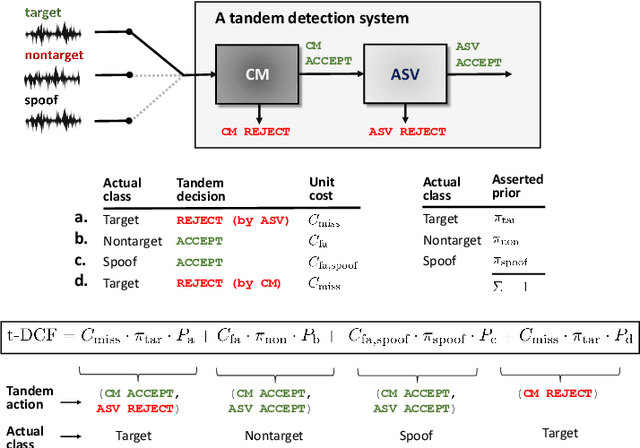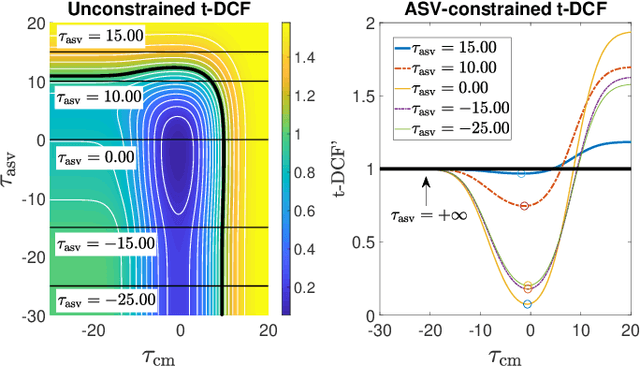Douglas A. Reynolds
Tandem Assessment of Spoofing Countermeasures and Automatic Speaker Verification: Fundamentals
Jul 12, 2020



Abstract:Recent years have seen growing efforts to develop spoofing countermeasures (CMs) to protect automatic speaker verification (ASV) systems from being deceived by manipulated or artificial inputs. The reliability of spoofing CMs is typically gauged using the equal error rate (EER) metric. The primitive EER fails to reflect application requirements and the impact of spoofing and CMs upon ASV and its use as a primary metric in traditional ASV research has long been abandoned in favour of risk-based approaches to assessment. This paper presents several new extensions to the tandem detection cost function (t-DCF), a recent risk-based approach to assess the reliability of spoofing CMs deployed in tandem with an ASV system. Extensions include a simplified version of the t-DCF with fewer parameters, an analysis of a special case for a fixed ASV system, simulations which give original insights into its interpretation and new analyses using the ASVspoof 2019 database. It is hoped that adoption of the t-DCF for the CM assessment will help to foster closer collaboration between the anti-spoofing and ASV research communities.
t-DCF: a Detection Cost Function for the Tandem Assessment of Spoofing Countermeasures and Automatic Speaker Verification
Apr 25, 2018



Abstract:The ASVspoof challenge series was born to spearhead research in anti-spoofing for automatic speaker verification (ASV). The two challenge editions in 2015 and 2017 involved the assessment of spoofing countermeasures (CMs) in isolation from ASV using an equal error rate (EER) metric. While a strategic approach to assessment at the time, it has certain shortcomings. First, the CM EER is not necessarily a reliable predictor of performance when ASV and CMs are combined. Second, the EER operating point is ill-suited to user authentication applications, e.g. telephone banking, characterised by a high target user prior but a low spoofing attack prior. We aim to migrate from CM- to ASV-centric assessment with the aid of a new tandem detection cost function (t-DCF) metric. It extends the conventional DCF used in ASV research to scenarios involving spoofing attacks. The t-DCF metric has 6 parameters: (i) false alarm and miss costs for both systems, and (ii) prior probabilities of target and spoof trials (with an implied third, nontarget prior). The study is intended to serve as a self-contained, tutorial-like presentation. We analyse with the t-DCF a selection of top-performing CM submissions to the 2015 and 2017 editions of ASVspoof, with a focus on the spoofing attack prior. Whereas there is little to choose between countermeasure systems for lower priors, system rankings derived with the EER and t-DCF show differences for higher priors. We observe some ranking changes. Findings support the adoption of the DCF-based metric into the roadmap for future ASVspoof challenges, and possibly for other biometric anti-spoofing evaluations.
 Add to Chrome
Add to Chrome Add to Firefox
Add to Firefox Add to Edge
Add to Edge